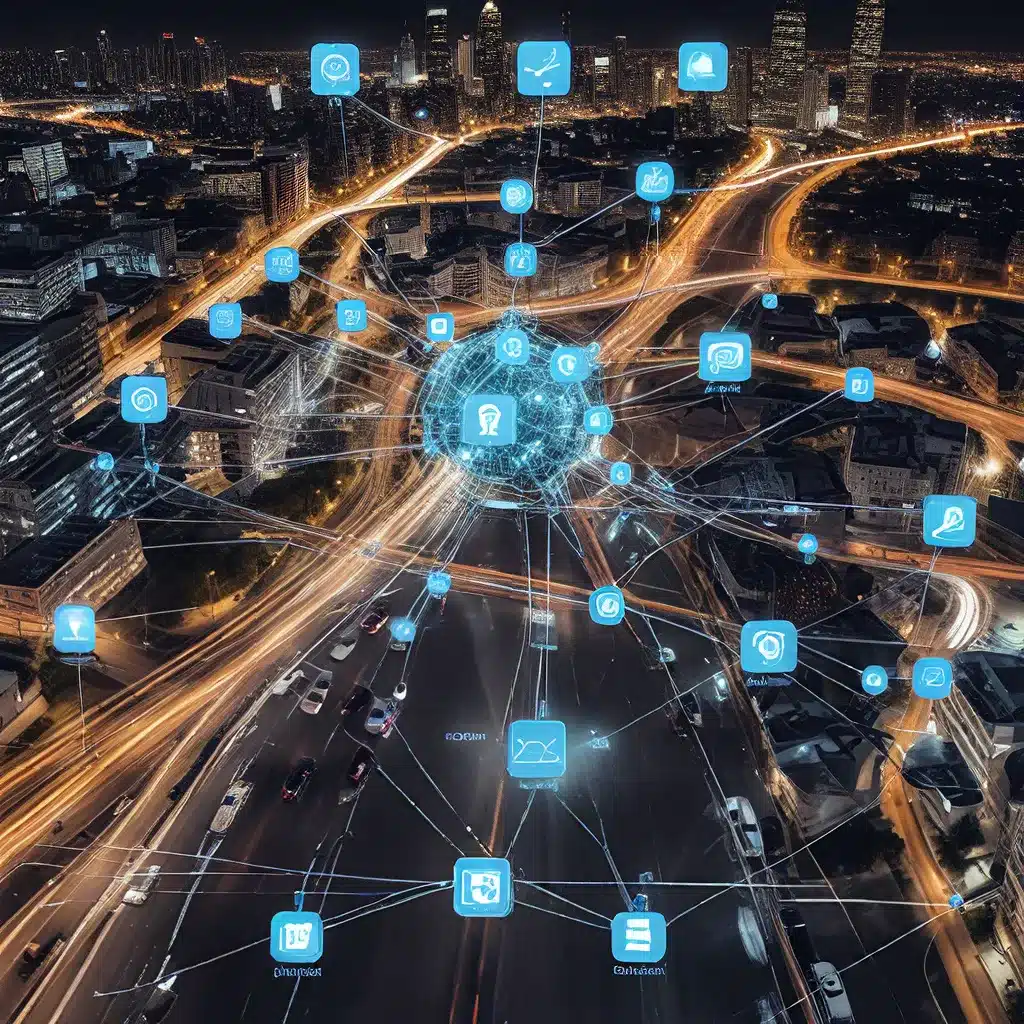
Unleashing the Potential of Sensor Networks in the IoT Era
The rise of the Internet of Things (IoT) has ushered in a new era of interconnectivity, where sensor networks play a crucial role in enabling intelligent, responsive, and self-organizing systems. As the IoT landscape continues to evolve, the design and implementation of autonomous and self-organizing sensor networks have become paramount, offering unprecedented opportunities for innovative applications and enhanced user experiences.
In this article, we delve into the key aspects of sensor network design, explore the latest IoT applications and their impact, address security challenges, and examine energy management strategies to create efficient and resilient sensor network deployments.
Sensor Network Design: Foundations for Autonomous and Self-Organizing Systems
At the core of sensor network architecture lies the node, which serves as the fundamental building block. These nodes are equipped with various sensors, communication modules, and processing capabilities, enabling them to gather, process, and transmit data within the network. The network topology, or the arrangement of these nodes, is a critical design consideration, as it determines the flow of information, efficiency, and resilience of the overall system.
Research has identified several network topologies that cater to the diverse needs of IoT applications, including star, mesh, and hybrid configurations. Each topology offers unique advantages, such as centralized control, distributed processing, and fault tolerance, making them suitable for different scenarios.
To achieve autonomy and self-organization, sensor networks must possess the ability to adapt to changing conditions, self-configure, and optimize their performance without manual intervention. This is where machine learning and artificial intelligence algorithms come into play, enabling nodes to learn from their environment, make decisions, and coordinate their actions in a decentralized manner.
Innovative IoT Applications Powered by Sensor Networks
The integration of sensor networks and the IoT has unlocked a wealth of innovative applications across various industries, transforming the way we interact with the physical world.
In the smart city domain, sensor-equipped infrastructure can monitor traffic flow, detect environmental conditions, and coordinate emergency response, enhancing urban efficiency and sustainability. Similarly, agriculture has witnessed a revolution with soil moisture sensors, livestock tracking, and precision farming techniques that optimize resource utilization and increase productivity.
Moreover, healthcare has seen a surge in remote patient monitoring systems, leveraging wearable sensors to track vital signs and trigger timely interventions. Industrial automation has also benefited from sensor networks, enabling predictive maintenance, supply chain optimization, and real-time quality control.
These are just a few examples of the transformative potential of sensor networks in the IoT landscape, empowering industries to make data-driven decisions, improve operational efficiency, and enhance the overall user experience.
Securing Sensor Networks in the IoT Realm
As sensor networks become increasingly ubiquitous, security emerges as a critical concern, safeguarding the integrity and confidentiality of the data being collected and transmitted.
Researchers have identified several security challenges inherent to sensor networks, including resource constraints, wireless communication vulnerabilities, and the potential for malicious attacks. To address these challenges, robust security protocols and encryption techniques have been developed, leveraging symmetric-key cryptography, public-key cryptography, and emerging technologies like blockchain.
Furthermore, security must be a consideration throughout the entire sensor network lifecycle, from design and deployment to ongoing maintenance and upgrades. Secure firmware updates, access control mechanisms, and anomaly detection systems play a crucial role in safeguarding the IoT ecosystem.
Powering Sensor Networks: Strategies for Energy-Efficient Designs
One of the key challenges in sensor network deployments is energy management, as sensor nodes are often battery-powered and deployed in remote or inaccessible locations.
Researchers have explored various energy-efficient strategies to address this issue, including energy harvesting, dynamic duty cycling, and network-level optimization.
Energy harvesting technologies, such as solar, vibration, or thermal energy, can extend the lifespan of sensor nodes by replenishing their power sources. Dynamic duty cycling, on the other hand, allows nodes to enter low-power modes when not in use, reducing energy consumption without compromising network functionality.
At the network level, optimization algorithms can intelligently manage the distribution of tasks and data routing, minimizing energy expenditure while maintaining performance and reliability.
By incorporating these energy-efficient design principles, sensor networks can operate for extended periods without the need for frequent battery replacements or maintenance, enhancing the overall sustainability and cost-effectiveness of IoT deployments.
Conclusion: Embracing the Future of Sensor Networks and IoT
The convergence of sensor networks and the Internet of Things has ushered in a new era of intelligent, responsive, and self-organizing systems. By designing autonomous and self-organizing sensor networks, we can unlock the full potential of the IoT, driving innovation across a wide range of industries and transforming the way we interact with the physical world.
As we continue to explore the frontiers of sensor network technology, security, energy management, and adaptive capabilities will remain crucial considerations, ensuring the resilience and sustainability of IoT deployments.
Through collaborative efforts between researchers, industry practitioners, and end-users, we can harness the power of sensor networks to create a more sensor-networks.org connected and responsive world**.